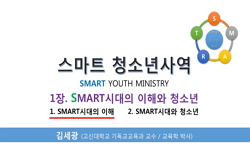‘GIVE’에 해당하는 어휘는 일반적으로 행위자, 대상, 수혜자의 논항 3개를 필요로 하는 다중 타동사로 사용된다. 그러나 남아시아어들을 중심으로 여러 언어들에서 ‘GIVE’에 해당하는 어...
http://chineseinput.net/에서 pinyin(병음)방식으로 중국어를 변환할 수 있습니다.
변환된 중국어를 복사하여 사용하시면 됩니다.
- 中文 을 입력하시려면 zhongwen을 입력하시고 space를누르시면됩니다.
- 北京 을 입력하시려면 beijing을 입력하시고 space를 누르시면 됩니다.
https://www.riss.kr/link?id=A107591255
-
저자
Lim Youksown (부경대학교 대학원) ; Park Soonhyuck

- 발행기관
- 학술지명
- 권호사항
-
발행연도
2021
-
작성언어
-
-
주제어
원형 ; 허락 ; 사역 ; 수혜자 ; 연속동사 ; give ; pei:lexeme ; permissive ; causative ; benefactive ; serial verb
-
KDC
300
-
등재정보
KCI등재
-
자료형태
학술저널
- 발행기관 URL
-
수록면
215-234(20쪽)
-
KCI 피인용횟수
0
- DOI식별코드
- 제공처
-
0
상세조회 -
0
다운로드
부가정보
국문 초록 (Abstract)
‘GIVE’에 해당하는 어휘는 일반적으로 행위자, 대상, 수혜자의 논항 3개를 필요로 하는 다중 타동사로 사용된다. 그러나 남아시아어들을 중심으로 여러 언어들에서 ‘GIVE’에 해당하는 어휘가 이러한 일반 용법 이외에 다양한 방식과 기능으로 활용되는 것으로 알려져 있다. Lord et al.(2002)는 아칸어, 태국어, 말레이어, 요루바어 등에서 GIVE 를 기존 다중 타동사의 기능 이외에 수혜자(benefactive) 표시자, 관점(perspective/stance) 표시자, 허락/사역(permissive/causative) 표시자, 목적/결과(purposive/consequence) 표시자, 그리고 사유(reason) 표시자로 분류하고 있다. Song(1997)은 태국어, 캄보디아어, 베트남어에서 기존의 다중 타동사의 어휘소와 더불어 수혜자 표시자, 목적 표시자, 그리고 부사-구성(adverb-formation) 표시자로서 GIVE 의 기능을 구분하고 있다. 다수의 언어에서 ‘GIVE’에 해당하는 어휘들의 다양한 기능들이 보고되고 분류되어 왔음에 반해 미얀마어의 pei:‘give’에 대한 연구는 거의 없었고, 비교적 최근에 와서야 Okell and Allot(2001)과 Okano(2005)에서 pei:를 허락/사역 표시자 기능 정도로 분석하고 있다. 따라서 본 논문은 미얀마어의 pei:에 대하여 허락과 사역 표시자 이외의 기능을 밝히고 이를 근거로 pei:에 대한 일반화를 시도한다. 실제로 미얀마어의 pei:는 다중 타동사와 허락/사역의 기능뿐만 아니라 수혜자 및 의도(intention) 표시자로의 기능이 있음을 제안하고, 이를 통합하여 크게 세 가지 유형의 pei:, 즉 다중 타동사 pei:, 사역의 pei:그리고 상(aspectual)의 pei:로 정리한다. 특히 사역의 pei:에는 이중 절 구조가 이용되며, Hasegawa(2002) 등의 제안을 토대로 상위절 v에 [causative] 자질이 설정된다. 상의 pei: 활용을 위해서 본 연구는 상구(Aspectual Phrase)를 제시하며 그 머리어에는 [beneficiary] 혹은 [intention]의 자질을 설정한다. 그 동안 연구가 미진했던 미얀마어의 pei:에 대한 기능들을 일관성 있게 분류하고 세 가지 유형으로 일반화를 하였다는 점에서 논문의 의의를 찾을 수 있다. 이러한 분석에는 형태론적 그리고 통사론적 근거들이 활용되었으며, 향후 이 세 가지 유형으로의 변화에 대한 통시적 근거와 더불어 사역과 상의 pei:에서 하위 동사들과의 융합(incorporation)의 과정에 달라지는 어순에 대한 후속 연구가 필요하다.
다국어 초록 (Multilingual Abstract)
The word ‘GIVE’ is highly productive in many languages. Lord et al. (2002) categorize the functions of the word ‘GIVE’ as a main verbal lexeme (ditransitive verb), a benefactive marker, a perspective/stance marker, a permissive and causative m...
The word ‘GIVE’ is highly productive in many languages. Lord et al. (2002) categorize the functions of the word ‘GIVE’ as a main verbal lexeme (ditransitive verb), a benefactive marker, a perspective/stance marker, a permissive and causative marker, a purposive/consequence marker, and a reason marker in Akan, Thai, Malay, and Yoruba languages. Song (1997) groups the functions of the word ‘GIVE’ as a main verbal lexeme, a benefactive marker, a purposive marker, and an adverb-formation marker in Thai, Khmer, and Vietnamese languages. Lee (1993) reports further that the word ‘GIVE’ can be used as a main verbal lexeme, a benefactive marker, and a permission marker. Although analysis of the word ‘GIVE’ has been widely done in many languages, pei: ‘give’ in Myanmar has received little attention and has been recently analyzed mainly in the causative construction. This paper thus analyzed the properties of pei: in Myanmar to see what aspects of pei: are used, how many functions it serves, and what patterns of pei: are used in the sentences. This paper categorized the functions of pei: into three types: a ditransitive pei:, a causative pei:, and an aspectual pei:All three functions of pei: have been generalized based on the morphological as well as syntactic aspects. Myanmar has thus been generalized within the framework of the universals and diversity in the study of languages. A further possible study will be on the issue of the left-right directionality of the incorporation of the lower verb onto pei:, which will surely reveal the morphological as well as the syntactic properties of pei: in Myanmar.
목차 (Table of Contents)
- Ⅰ. Introduction Ⅱ. Literature Review Ⅲ. Three Types of pei: ‘give’ Ⅳ. Conclusion References Abstract
- Ⅰ. Introduction Ⅱ. Literature Review Ⅲ. Three Types of pei: ‘give’ Ⅳ. Conclusion References Abstract
참고문헌 (Reference)
1 Lord. C., "Typological Studies in Language 49: New Reflections on Grammaticalization" John Benjamins Publishing Co. 217-235, 2002
2 Zimmermann, J., "The New Testament of Our Lord and Saviour Jesus Christ" The British and Foreign Bible Society 1859-1861, 1859
3 Chomsky, N., "The Minimalist Program" MIT Press 1995
4 Song, J., "The Linguistics of Giving" John Benjamins 327-348, 1998
5 Migge, B., "Substrate influence in creole formation: The origin of give-type serial verb constructions in the Surinamese Plantation Creole" 13 (13): 215-266, 1998
6 Okano, K., "Studies in Burmese Linguistics, PL-570, Pacific Linguistics" The Australian National University 97-104, 2005
7 Okell, J., "Reference Grammar of Colloquial Burmese" Oxford University Press 1969
8 Xu, Y., "Production and perception of coarticulated tones" 95 : 2240-2257, 1994
9 Collins, C., "Local Economy" MIT Press 1997
10 Yuh-show Cheng, "Language Anxiety: Differentiating Writing and Speaking Components" Wiley 49 (49): 417-446, 1999
1 Lord. C., "Typological Studies in Language 49: New Reflections on Grammaticalization" John Benjamins Publishing Co. 217-235, 2002
2 Zimmermann, J., "The New Testament of Our Lord and Saviour Jesus Christ" The British and Foreign Bible Society 1859-1861, 1859
3 Chomsky, N., "The Minimalist Program" MIT Press 1995
4 Song, J., "The Linguistics of Giving" John Benjamins 327-348, 1998
5 Migge, B., "Substrate influence in creole formation: The origin of give-type serial verb constructions in the Surinamese Plantation Creole" 13 (13): 215-266, 1998
6 Okano, K., "Studies in Burmese Linguistics, PL-570, Pacific Linguistics" The Australian National University 97-104, 2005
7 Okell, J., "Reference Grammar of Colloquial Burmese" Oxford University Press 1969
8 Xu, Y., "Production and perception of coarticulated tones" 95 : 2240-2257, 1994
9 Collins, C., "Local Economy" MIT Press 1997
10 Yuh-show Cheng, "Language Anxiety: Differentiating Writing and Speaking Components" Wiley 49 (49): 417-446, 1999
11 Newman, J., "Conceptualization and mental processing in language" Moutan de Gruyter 433-473, 1993
12 Hasegawa, N., "Causatives and the Role of v: Agent, Causer, and Experiencer"
13 Okell, J., "Burmese/Myanmar dictionary of grammatical forms" Curzon Press 2001
14 Lee, K., "A Korean Grammar on Sematic-Pragmatic Principles" Hankwuk Munhwasa 1993
동일학술지(권/호) 다른 논문
-
- 부경대학교 인문사회과학연구소
- 정진경(Jeong Jinkyung)
- 2021
- KCI등재
-
유치원교사의 직무스트레스와 정신건강의 관계에서 직무스트레스 대처전략의 매개 효과
- 부경대학교 인문사회과학연구소
- 허아림(Hoe Arim)
- 2021
- KCI등재
-
- 부경대학교 인문사회과학연구소
- 곽현숙(Kwak Hyunsuk)
- 2021
- KCI등재
-
중년 남성의 성역할스트레스가 중년의 위기감에 미치는 영향:정서표현양가성과 정서인식명확성의 조절된 매개효과
- 부경대학교 인문사회과학연구소
- 김민정(Kim Minjung)
- 2021
- KCI등재
분석정보
인용정보 인용지수 설명보기
학술지 이력
| 연월일 | 이력구분 | 이력상세 | 등재구분 |
|---|---|---|---|
| 2027 | 평가예정 | 재인증평가 신청대상 (재인증) | |
| 2022-03-23 | 학술지명변경 | 외국어명 : Institute for Humanities and Social Sciences -> The Journal of Humanities and Social Sciences |  |
| 2021-01-01 | 평가 | 등재학술지 유지 (재인증) |  |
| 2018-01-01 | 평가 | 등재학술지 유지 (등재유지) |  |
| 2015-01-01 | 평가 | 등재학술지 선정 (계속평가) |  |
| 2014-09-30 | 학술지명변경 | 외국어명 : 미등록 -> Institute for Humanities and Social Sciences |  |
| 2013-01-01 | 평가 | 등재후보학술지 유지 (기타) |  |
| 2011-01-01 | 평가 | 등재후보학술지 선정 (신규평가) |  |
학술지 인용정보
| 기준연도 | WOS-KCI 통합IF(2년) | KCIF(2년) | KCIF(3년) |
|---|---|---|---|
| 2016 | 0.29 | 0.29 | 0.32 |
| KCIF(4년) | KCIF(5년) | 중심성지수(3년) | 즉시성지수 |
| 0.43 | 0.41 | 0.555 | 0.16 |




 KCI
KCI 스콜라
스콜라






